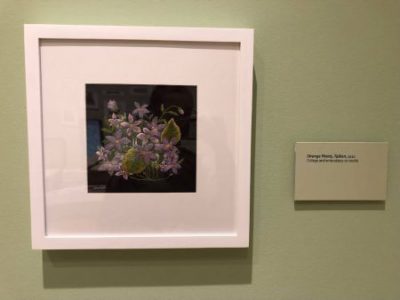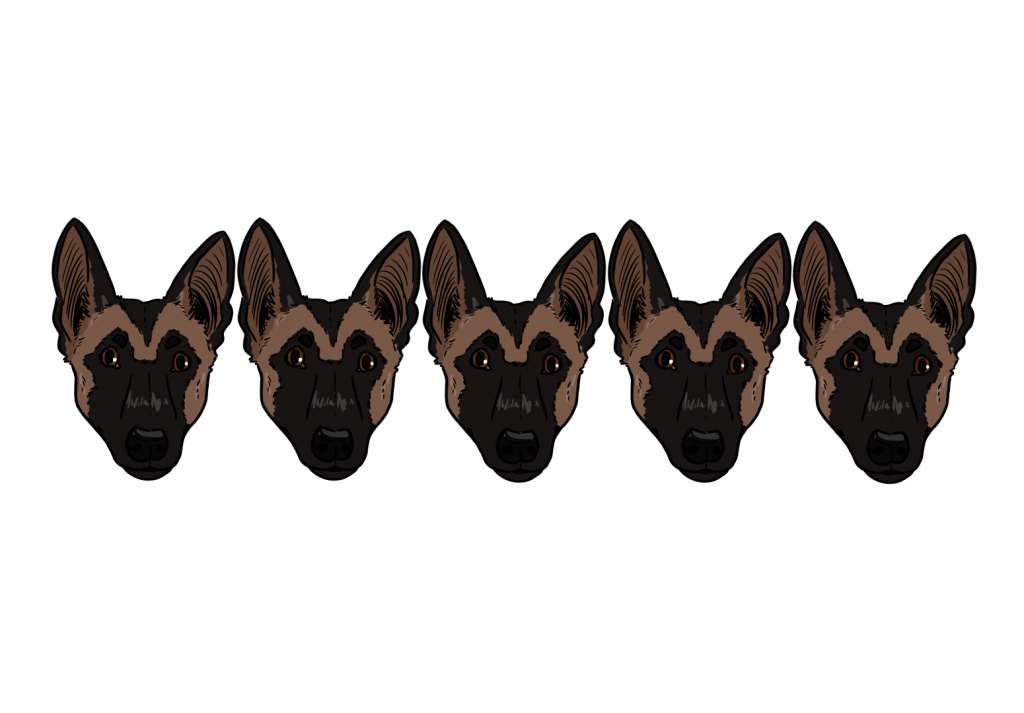Featured Image: Strange Plants piece, Tallinn, displays a beautiful collage and embroidery on textile. Cecilia Candelaria | Marlin Chronicle
Beardsley’s artwork…is meant to foreshadow the continuation of life after the human race ceases to exist.”
The captivating Strange Plants exhibit, currently on display at the Chrysler Museum, serves as an artistic conduit for the thoughts and ideas of the talented, contemporary artist Heather Beardsley.
Her profound perspective on the pressing matter of climate change is passionately conveyed through a captivating and slightly unsettling collection that combines pictures patterned with embroidery and intricate clay creations. Beardsley’s exploration of this critical topic is both unique and haunting, offering viewers a thought-provoking and eye-opening experience.
The photographs that are included in Beardsley’s collection are a testament to her own travels and experiences. Each image uniquely imprints the various cities and countries she has visited or briefly resided in throughout her academic and professional journeys. Among the featured locations are Budapest, Chicago, Beijing, Virginia Beach, Las Vegas and many more. Though these are all very different locations, what all the altered images have in common, is the eerie feeling that lingers when viewers analyze each piece.
The plants she has sewn into each captured moment are beautiful, wild and strange. They overtake buildings and fill empty spaces, with not a single person in sight, and when there is someone, they are entirely oblivious to the growth of vegetation engulfing them and their surroundings. Beardsley’s artwork is meant to express the idea that nature will always take over what was once theirs, and it is meant to foreshadow the continuation of life after the human race ceases to exist.
A series of images were taken in the year 2017 in Pripyat, the closest town to the Chernobyl nuclear disaster over thirty years later. The artist noted that the structures were still abandoned and described it as a ‘ghost town.’ This collection of images leaves a bigger impact than the rest due to how quickly and effectively everything living was wiped away.
These pieces speak volumes and serve as a reminder that nature will eventually heal what humans don’t touch, but also as a warning, because even the untouched ghost town had received so much nuclear damage, life was still struggling to thrive in its setting over three decades later.
Something in the exhibit that stood out to me was a wooden dollhouse with detailed vegetation Beardsley made out of clay. The clay vegetation was carefully placed along the perimeter of the house and took over the miniature furniture and appliances. The dollhouse was made for Heather by her father when she was a five-year-old child. She recently found the dollhouse in the family’s attic and used the abandoned structure to further express her perspective on the world and its inevitable cycles.

Beardsley’s nostalgic dollhouse, made for her by her father, now repurposed and decorated with clay plants. Cecilia Candelaria | Marlin Chronicle
This parallels the real world. In the same way that abandoned houses grow vegetation due to lack of upkeep, the abandoned dollhouse was given the same fate. Ironically, this time it was a human who created the overgrowth rather than ripping it away.
Focusing our attention back on the embroidered pictures, a few photographs were even taken in Virginia Beach, Ocean View and Norfolk. These pieces are more personal to the artist, her hometown being Virginia Beach, Va. Those photos featured the main Summer Resort in Ocean View and the Virginia Beach Civic Center.
In these photos, wild plants are sewn into the frame and take over buildings. Even though the artist traveled a lot and got inspiration from many places, she found fuel for her imagination in her hometown and roots from her childhood.
This just further proves how powerful the message the art is sending because the artist has a history with and is knowledgeable about everything she makes art out of. I enjoyed going to see this exhibit, it was well-organized by the museum and well-executed by the artist. The artist expressed a powerful message that anyone interested in the topic of climate change would appreciate.
I admired the beauty of Heather Beardsley’s collection, as well as its underlying eeriness. In addition, it’s great to know more about a newly emerging local artist. This collection is her debut solo exhibit and is open to view for free until late October at the Chrysler Museum, located in the heart of downtown Norfolk.
Not only is her collection available to view, but many other permanent and seasonal exhibits are open to the public. I wish I had more time to look at everything else in the museum that day; a few things definitely caught my eye on the way out.
Even if the topic of climate change doesn’t grasp your attention, there is plenty more art fueled by various pressing social issues, providing some brain food for a wide variety of people.
Cecilia Candelaria

